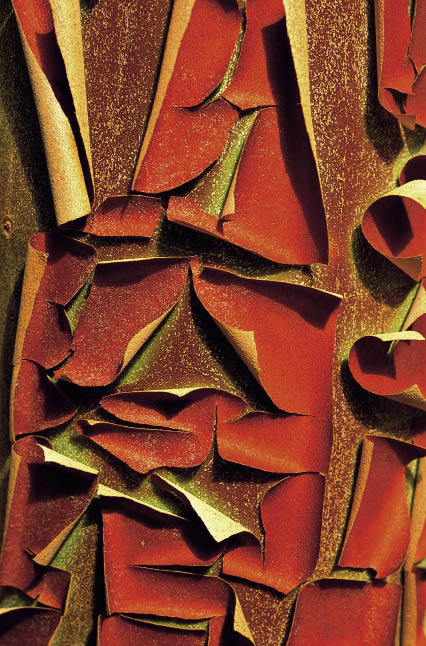This book is a work of art by an artistic photographer. It deals mainly with a large minority of the world’s trees whose bark, as the trunk expands, peels off in pretty patterns: snake-bark maples, arbutuses and the like, as well as the familiar London plane. The author has travelled all over the world to photograph these wondrous barks. He also includes some trees whose bark stretches, like white poplar, as well as palms whose trunks are covered in leaf-bases rather than bark, bamboos which are really giant grasses, banana-plants which are not trees, and tree-ferns. He even has one example of that mysterious hard layer that does the duty of bark on the insides of hollow trees.
In the real world there is much more to bark than this. In most everyday trees, like oaks and elms, the bark cracks as the tree gets bigger, and in the past its dull and rigged surface was often covered with a miniature garden of liverworts and lichens — as can still be seen in Dorset and Dartmoor and other places where air pollution has not taken its toll. These are not artistic enough for this book; I could only find one picture that includes an obvious lichen.
There are some instructive serial photographs showing how bark-shedding trees vary with the seasons. Otherwise the reader will not learn much about trees. There is a little about bark products like cinnamon and cork and incense, but not the age-old use of oak bark in tanning leather. The snippets of text that accompany the pictures are all too short and have suffered in translation from French: thus Arbutus andrachne is not the strawberry tree. However, this should be enjoyed as a beautiful picture book: Cédric Pollet deserves his Redouté Prix Artistique.






Comments